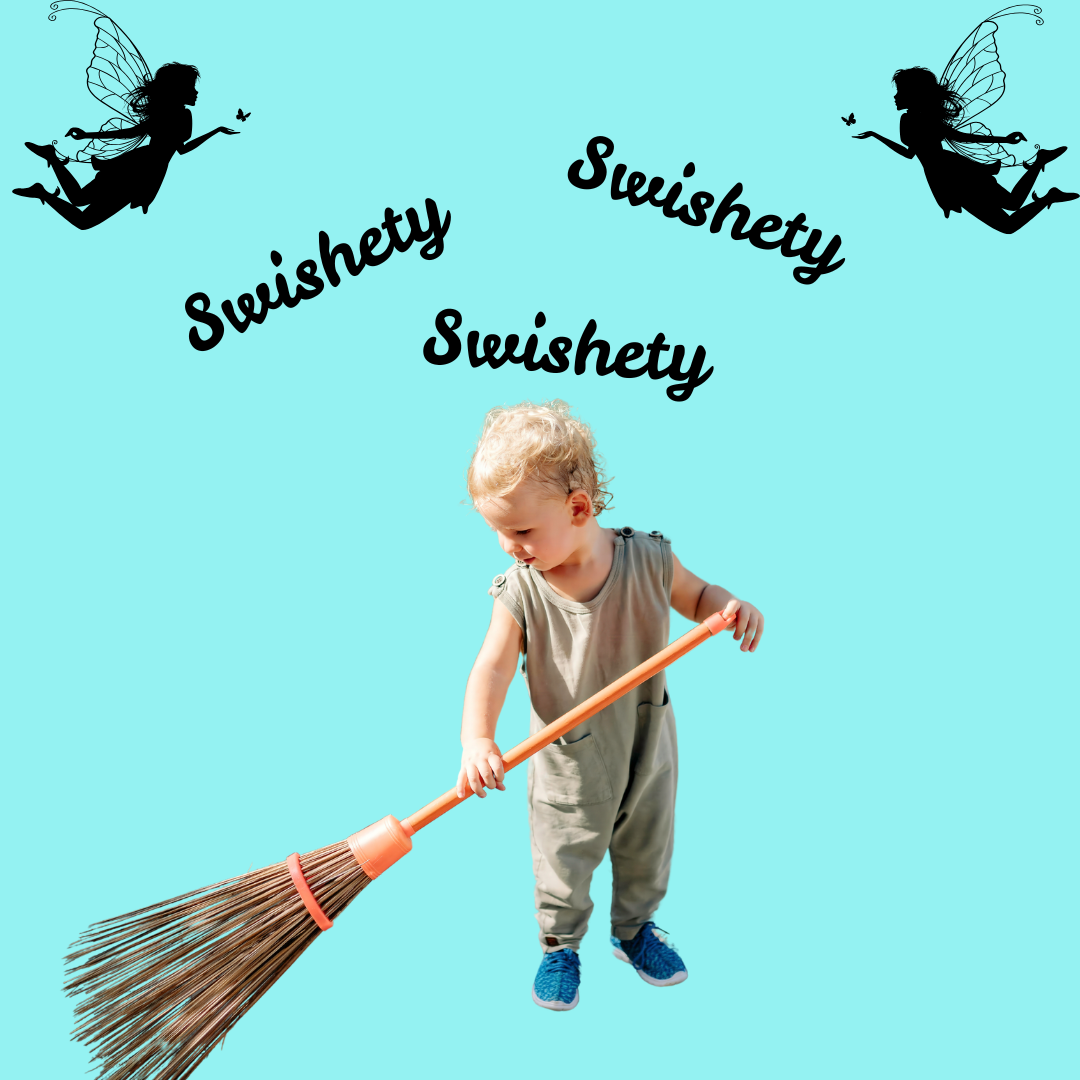Too Many Fairies? But WHY?
Once upon a time…
There was a little old woman who didn’t like housework.
I mean: that women could be me! Or many of us, I suspect!
But when THIS old woman complained, the fairies heard her. And decided to do something about it.
As delightful as that would seem to be, it was…too much. Their help soon morphed into a massive interruption to the old woman’s peaceful existence.
I wonder: is that how children sometimes perceive OUR help?
Like the fairies, we often have a hard time watching children struggle with a new or challenging task.
Like the fairies, we often jump in and either help, or take over.
After all: we’re way more competent than a young child just learning to wipe up a table, or glue a button onto a creation, or even (we think!) come up with the best way to serve pretend pizza in the sandbox.
And faster, too! 💪🏽
But how does that impact our shared goal: each child’s joyful development?
The executive function of cognitive flexibility develops when we wrestle with things not going the way we think they should. THAT’S when we have to pivot to “out of the box thinking.” Not when our solutions work perfectly the first time.
Working memory, EF’s worker bee, requires repeated practice of holding in mind sequences of actions as we complete a task.
And that trickster inhibitory control? When there is no challenge, no risk, how can we learn to rein in, or screen out, those internal impulses? You know, those ones that stop us from paying attention and giving each situation our best shot?
In this week’s Celtic folktale, retold by master storyteller Margaret Read McDonald, the little old woman discovers for herself that she really doesn’t WANT the fairies’ help.
This ticks the fairies off! They just want to help!
But as with the fairies, OUR pure intentions may not always be in the best interest of those we care about.
Spoiler alert: the old woman finally discovers she LOVES her daily tasks, and lives happily ever after while doing them.
Just like we hope children will!
Too Many Fairies: A Celtic Tale
Retold by Margaret Read McDonald
Illustrated by Susan Mitchell
Why this variant?
Rollicking, repetitive text invites audience participation
Bright illustrations filled with humor and whimsy
Lots of “sounds” for children to repeat and use in their play.
Want a quick reading of the tale?
Or check out this young storyteller’s version!
Dance Like Fairies, Make a Sound!
What did the fairies do, after they were banned from cleaning the little old lady’s house? Probably: they DANCED!
Moving to music is magical for children, as well as fairies. In fact, it nurtures the ordinary magic of resilience by developing both executive functions and self-regulation. (Not to mention joyful relationships!)
Our early childhood colleagues in Australia write about Using Music, Rhythm, and Movement to Enhance Children's Self-Regulation.
Their article explains the connection between self-regulation and executive functions. And, it offers lots of great examples about how to use the magic of music and movement with young children.
It can be as simple as having the children dance like fairies, to any music you choose. Here’s a fun album of Celtic music for children if you want be authentic to the culture of the tale.
Add scarves. Or how about bells, or other rhythm instruments? Moving to the beat develops executive functions! And is FUN!
Or, try an action song game! Do you remember “Here We Go Round the Mulberry Bush?”
Here’s an adaptation for Too Many Fairies!
Forget the tune? Here’s a quick audio reminder! Want to print out the song to use? Click here for a pdf!
EF and Meaningful Work
Unlike the little old woman in Too Many Fairies, most children LOVE to do those daily tasks!
Wiping tables, sweeping up crumbs, doing the dishes: pretty much nirvana for young children eager to explore the real world of being a grown-up human!
Montessori embraces such activities. Called “Practical Life Activities,” or “meaningful work,” or “purposeful work,” they are foundational to the approach.
(I’m not a Montessori expert, so I’m not sure if each term has a nuance of meaning. Suffice to say all involve kids taking on the task of caring for themselves and their environment).
Children as young as two readily take on such tasks and…develop executive functions!
In this deep dive into The Importance of Practical Life, the authors identify how such activities support executive functioning in children. (As well as lots of other important skills).
If you aren’t already having children helping to prepare their own snacks, pour their own juice, and doing simple cleaning tasks (not just toy clean-up!), Too Many Fairies offers a perfect opportunity to try!
Some strategies to make it more successful?
Child-sized tools.
Playful introduction (who doesn’t want to be like a fairy? Or make cool sounds as they work?)
Step-by-step demonstrations with instructions at first.
Patience, and a willingness to step back!
Delight that you are helping build brains, as well as competent, confident, resilient children!
What do YOU think?
How do you use music and movement in your setting?
How about “meaningful work?”
Post your thoughts in the comments below!






